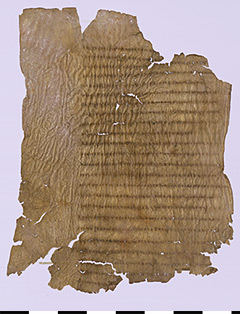BKT X 3 (P. 5007)
Crying singing, sad faces, that is how the city of Troy mourns its fallen hero Hector. His sister and widow lament his death, the father wants the corpse back.
Troy – a name we instantly connect to the Iliad. Homer’s epic tells the story of the Trojan War until Hector’s death and his funeral service. Paris kidnaps Helen and the Greeks gather to take her back but cannot get through Troy’s walls for 10 years. Already in the ancient times, the Iliad was a compulsory reading and a popular story. Only in the Ptolemaic times the scholars agreed on one version of the epic which was mostly transmitted orally before that time. It was probably created in the 8th century BC, but the exact year was not found yet. Nor is the birthplace of Homer known, aside from the fact that he lived in the Greek Mediterranean area. Many towns fought about being the birthplace of this great poet because of his popularity. His two most famous works are the Iliad and the Odyssey, the sequel to the Iliad.
On this piece of parchment of the 24th song of the Iliad, verse 698 to 748, Cassandra, the sister, and Andromache, the widow, are lamenting Hector’s death. He was the son of Troy’s king – Priamos – and the most important warrior of Troy in the war against the Greeks. He is being killed by Achilleus. Hector’s corpse is brought back into the town with a cart. All of Troy starts to mourn when Cassandra brings attention to her brother with her lament. Priamos orders, that the people should let the corps be brought to the palace where he is laid out in state. They sing dirges and mourn, lament him. The loudest one is Andromache who blames him for leaving her and their son without any last words. She also talks about her and the other Trojan women who are going to be captured and kidnapped by the Greeks. About her son she thinks that he will be enslaved or rather killed as revenge because of his father who killed many Greeks.
Conspicuous on this parchment is the size of the letters which is not more than 1 millimetre and is therefore hardly readable. The parchment itself is 18 centimetres long and 28 centimetres wide. It is marked by a few holes and is broken off at the top as well as at the bottom. The codex was written at the end of the 4th or beginning of the 5th century AD in Greek. The parchment is written on both sides with respectively 25 verses. On account of the small handwriting the text seems very tidy. The parchment was probably part of a splendid codex, an early version of a book. It was probably found in the Fayum. The Arsinoites, the ancient name of Fayum is the suspected birthplace of this parchment.



